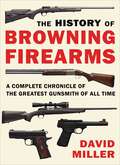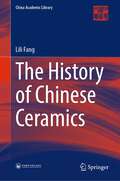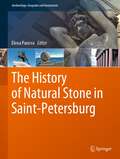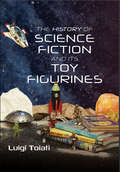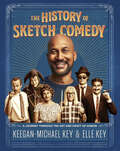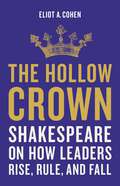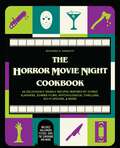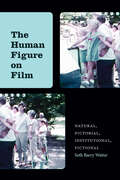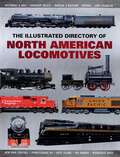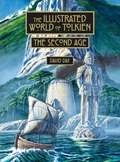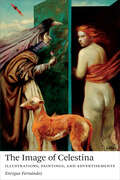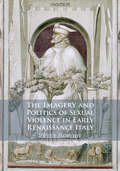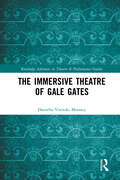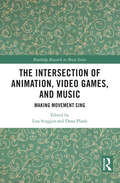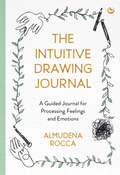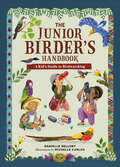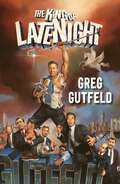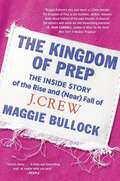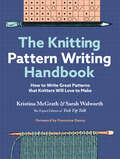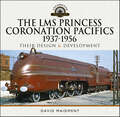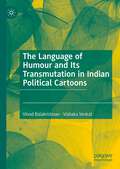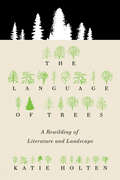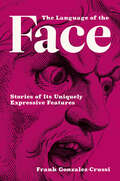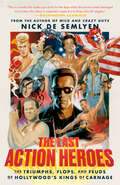- Table View
- List View
The History of Browning Firearms: A Complete Chronicle of the Greatest Gunsmith of All Time
by David MillerA captivating and wonderfully illustrated chronicle of one of the most influential and legendary names in gunsmithing history. John M. Browning was born in Ogden, Utah, in 1855, into a world of gunsmithing. His father was a gunsmith who was already well known for a number of innovations in the field. As a young boy, John spent hours in his father's shop and allegedly knew the name of every part of a gun before he could read. It's hardly surprising that at age twenty-three, he was filing his first patent for the "J. M. Browning Single-Shot Rifle." Browning inherited his father&’s gun making shop, and with funds of less than a thousand dollars, developed it into a highly successful business that developed several iconic firearms including the Colt Peacemaker. Browning also cooperated with Winchester to develop a whole range of small arms including semi-automatic pistols, single-shot rifles, repeater rifles, and machine guns. His enthusiasm and creativity have led many to believe he is the greatest firearm designer of all time. This fascinating book describes the Browning history, and in addition to covering the full range of inventions and designs, also shows various gun-making artifacts, copies of designers' drawings, and interesting photographs of the weapons in the hands of users. The History of Browning Firearms makes a perfect addition to the libraries of Wild West buffs and firearms enthusiasts.
The History of Chinese Ceramics (China Academic Library)
by Lili FangAdopting the perspective of anthropology of art and combining it with global academic insights, this book helps the readers to recognize that “history is, in great measure, the record of human activity which spreads from the local to the regional, from the regional to the global, and from the global to the universal.” Readers will learn that China was not only the first country to create porcelain, but also the first to export it to the world, both the products and its techniques. Therefore, the history of Chinese ceramics reflects the history of Chinese foreign trade on the one hand and depicts the expansion of Chinese ceramic techniques and cultures on the other. In addition to ceramics types, molds, decoration, and techniques, the book analyzes the spiritual impacts and aesthetic conceptions embodied in the utensils of daily use by the Chinese literati. Therefore, it reaches the conclusion that ideological systems and not technological systems are what bring about social revolutions. In addition, the book is richly illustrated with pictures of earthenware and finely glazed pieces from later periods.
The History of Natural Stone in Saint-Petersburg (Geoheritage, Geoparks and Geotourism)
by Elena PanovaThe book introduces readers to the heritage of St. Petersburg, sharing the geological history of a unique city, a world heritage site, and part of the UNESCO list. It also explains the role of small towns and fortresses near St. Petersburg, whose stone decoration played an essential role in the city’s evolution and was key in the history of neighboring cultures. The book also describes the main architectural symbols of St. Petersburg, such as the Alexander Column, the Bronze Horseman, the Peter and Paul Fortress and more. In addition to five guided tours of the city center, it offers descriptions of historic quarries, some of which are now open-air museums.
The History of Science Fiction and Its Toy Figurines
by Luigi Toiati"This eye-opening book deserves a spot on the bookshelves of anyone who not only enjoys collecting, but also has a great interest in all facets of the history of our hobby." — Toy Soldier Collector Science fiction, as the name suggests, is the combination of science and fantasy. In addition to a literary form, it also encompasses film, TV, comics, toys and our beloved toy astronauts, or other figures such as aliens, monsters and other playable genres. The term science fiction was coined by publisher Hugo Gernsbach around the first decades of the last century to refer to the predominantly 'space' adventures covered in his magazines. Space invaded radio, cinema, TV, and consequently for a long time toy figurines were predominantly space-related, later evolving into other themes. This lavishly illustrated book covers both the history of literary science fiction, following in the footsteps of contemporary official criticism, and toy figurines inspired by science fiction. You will also find several other themes, such as the link between science fiction figures and cinema, radio, TV, comics, and more. Luigi Toiati offers to both guide the reader on an often-nostalgic walk through science fiction in all its various forms, and to describe the figurines and brands associated with it.
The History of Sketch Comedy: A Journey through the Art and Craft of Humor
by Keegan-Michael Key Elle Key"A boisterous debut … the authors are as funny as one would expect … this is a hoot.” ―Publishers Weekly “Will entice fans of Key & Peele … a fun and funny primer on the art form.” ―BooklistAuthors Keegan-Michael Key and Elle Key build on the popularity of their 2022 Webby Award–winning podcast and delve deeper into the world of sketch, helped along with new essays created expressly for the book by comedy greats.The History of Sketch Comedy will appeal to all kinds of comedy fans as well as fans of Keegan-Michael Key, whether they know him from his Emmy and Peabody-winning work on Key & Peele; his roles in Fargo, The Prom, Schmigadoon!, The Bubble, and the upcoming Wonka; voiceover work in The Lion King; or as President Barack Obama's anger translator, Luther.With epic personal tangents and hilarious asides, the Keys take you on an illuminating journey through all facets of comedy from the stock characters of commedia del arte in the 16th century, to the rise of vaudeville and burlesque, the golden age of television comedy, the influence of the most well-known comedy schools, and the ascension of comedy films and TV specials—all the way through to a look at the future of sketch on social media platforms. Along the way, we hear tales of Keegan's childhood, his comedy influences, and the vicissitudes of his career path. As the New York Times said in its review of their podcast, "this comedy nerd history is filtered through memoir, with Key relating stories of his budding fandom, training and rise from improv comic to television sketch artist."Part memoir, part masterclass, and hilariously embellished with priceless commentary, The History of Sketch Comedy highlights the essential building blocks of sketch comedy while interweaving Keegan's personal career journey and the influence of his comedy heroes. The text is complemented by original art by Elle Key and exclusive essays compiled from conversations with influential performers, sketch writers, and uber comedy fans including Mel Brooks, Julia Louis-Dreyfus, Mike Myers, Chris Rock, John Oliver, Tracy Morgan, Carol Burnett, Jim Carrey, Jordan Peele, and many more. This book is as entertaining as it is enlightening—a must-read for fans of comedy and all who aspire to comic greatness.EXPANDING THE HIT PODCAST: With content from the #1 trending, NAACP-award-nominated and Webby-Award-winning Audible podcast, and featuring new-for-the-book material as well as never-before-heard stories and essays, this book will be a hit for newcomers and avid listeners of the podcast alike.MASTER OF THE MEDIUM: Keegan-Michael Key is a bona fide maestro of comedy, with the chops, experience, and love for the history of the medium that make him the perfect expert on all things sketch. As co-writer Elle Key likes to say, "If Keegan-Michael Key was a guest lecturer at NYU teaching a course called 'The History of Sketch Comedy,' it would be a very popular class."EXCLUSIVE ESSAYS: Keegan and Elle interviewed over a dozen comedy legends exclusively for this book, and got their takes on topics ranging from the influence of Saturday Night Live, to women in comedy, to the mathematics of sketch. Hear, in their own words, from Mel Brooks, Mike Myers, Jordan Peele, Julia-Louis Dreyfus, John Oliver, Tracy Morgan, Stephen Colbert, Carol Burnett, Chris Rock, Bob Odenkirk, Mike Birbiglia, Matt Lucas, Ken Jeong, Christopher Guest, Gary Oldman, Kevin Nealon, Laraine Newman, and Jim Carrey.GIFTABLE VOLUME OF COMEDY GOLD: Original illustrations and personal photographs throughout make this unique comedy book as visually entertaining as it is enlightening. The perfect gift for comedy fans of a
The Hollow Crown: Shakespeare on How Leaders Rise, Rule, and Fall
by Eliot A. CohenWhat Shakespeare&’s plays can teach us about modern-day politics William Shakespeare understood power: what it is, how it works, how it is gained, and how it is lost. In The Hollow Crown, Eliot A. Cohen reveals how the battling princes of Henry IV and scheming senators of Julius Caesar can teach us to better understand power and politics today. The White House, after all, is a court—with intrigue and conflict rivaling those on the Globe&’s stage—as is an army, a business, or a university. And each court is full of driven characters, in all their ambition, cruelty, and humanity. Henry V&’s inspiring speeches reframe John F. Kennedy&’s appeal, Richard III&’s wantonness illuminates Vladimir Putin&’s brutality, and The Tempest&’s grace offers a window into the presidency of George Washington. An original and incisive perspective, The Hollow Crown shows how Shakespeare&’s works transform our understanding of the leaders who, for good or ill, make and rule our world.
The Horror Movie Night Cookbook: 60 Deliciously Deadly Recipes Inspired by Iconic Slashers, Zombie Films, Psychological Thrillers, Sci-Fi Spooks, and More (Includes Halloween, Psycho, Jaws, The Conjuring, and More) (Gifts For Movie And Tv Lovers Ser.)
by Richard S. SargentSlay movie night with frighteningly delicious food and cocktail creations inspired by your favorite scary movies, perfect for fans of spooky season and movie buffs alike!If you're looking for kitschy Pinterest recipes like coffin-shaped cookies or zombie finger sandwiches, look elsewhere. With The Horror Movie Night Cookbook, you&’ll enjoy thoughtful and tasty food and cocktail pairings inspired by the actual content of chilling classics like Jaws, Psycho, Scream, The Conjuring, The Evil Dead, Halloween, and more of horror&’s most frightening favorites! Inside you&’ll find recipes like: Crawling Steak (Poltergeist) Campfire Sour (The Blair Witch Project) Zombie Baby Kale Salad (Dawn of the Dead) Bloody Floaties (Jaws) Alligator Bites (Crawl) The Mama&’s Boy Martini (Psycho) And more! This killer cookbook contains everything you'll need to be the star of your own horror-themed dinner party. So to quote a famous final girl, &“What are you waiting for?&”
The Human Figure on Film: Natural, Pictorial, Institutional, Fictional (SUNY series, Horizons of Cinema)
by Seth Barry WatterThe Human Figure on Film asks what it is we look for when we look at human beings projected on a screen. People have appeared onscreen since film was invented. Nothing could be more common, and yet nothing confounds us more, than a filmed human being. Scholars and critics have attempted to reduce the mystery, creating methodologies that make this figure legible. Some of their efforts form the subject of this book.Each chapter is devoted to a single, central concept—the natural, the pictorial, the institutional, and the fictional—that viewers have used to make sense of what they see. Each concept, in turn, is tied to the work and methods of a particular kind of historical observer: the natural historian (Ray L. Birdwhistell), the aesthete or pictorialist (Victor O. Freeburg), the anthropologist of institutions (Hortense Powdermaker), and the critic of fiction (V. F. Perkins). All of these researchers have their own interests and criteria of understanding, ranging from a microscopic look at gestures to a broad view of characters. Using a combination of critical history, biography, and formal analysis, The Human Figure on Film offers a fresh approach to the problem of figuration in an age of digital cinema. It is, at once, a cross-section of the field of film studies, a handbook of methods, and an inquiry into the nature of inquiry itself.
The Illustrated Directory of North American Locomotives: The Story and Progression of Railroads from The Early Days to The Electric Powered Present
by Pepperbox PressMore than 250 classic American locomotives."Let the country but make the railroads, and the railroads will make the country." — Edward PeaseDuring the mid-1800s, American railroads became the lifeblood of new communities in the West and brought new ways of life and means of commerce to rural communities. Railroads became the shining thread that tied together the tapestry of American life into a land of plenty. The Illustrated Dictionary of North American Locomotives explores the story of railroads and their motive power. Giant beasts of iron and steel once roamed the land. Their descendants still race across the country.This book charts the progress of motive power on America's railroads from 1830 until the present. Its 432 pages illustrate a wide variety of grand and humble locomotives from the steam powered Puffing Billy types of the "Early Days" chapter, to the mighty Allegheny class steamers that were used to haul coal for the American industry in the "Steam in Charge" chapter. Technical specifications are given for each engine type and the book is fully illustrated with both black & white and color photos. The book goes on to show the progress of Diesel Power, including the output of General Electric and General Motors electromotive division (EMD) from the 1920s to the present. Ultimately, the book also explores the Electric Power that powers so many of today's railways.
The Illustrated World of Tolkien The Second Age (Tolkien)
by David DayThis volume is an in-depth and exquisitely illustrated guide to the Second Age of Middle-earth, one of the least-explored periods of Arda's history.The Illustrated World of Tolkien: The Second Age, is the follow up companion to the best-selling The Illustrated World of Tolkien, and gathers together artwork, charts, and fascinating and scholarly writing from renowned Tolkien expert David Day. Exploring the languages, poetry and elements of the heroic ages of Norse, Greek and Roman mythologies that may have influenced Tolkien's writing, it is a reference guide for any fan of Tolkien's work, Tolkien's world and the imaginative brilliance his vision inspired.The Second Age is made up of two great narrative channels: on the one hand the rise and cataclysmic downfall of the island-kingdom of Númenor and its aftermath, and on the other the forging of the Rings of Power and the rise to power of the new dark lord.Tolkien's sources for his Second Age are, of course, as rich and varied as ever and this book delves into some of these influences and shows how the power of Tolkien's imagination is manifest even in the lesser-known parts of his legendarium.This work is unofficial and is not authorised by the Tolkien Estate or HarperCollins Publishers.
The Image of Celestina: Illustrations, Paintings, and Advertisements (Toronto Iberic)
by Enrique FernándezLa Celestina, a Spanish literary masterpiece second only in importance to Don Quixote in Spanish literature, has been shaped by the inclusion of images from its very first edition in 1499. The subsequent five centuries were punctuated by many illustrated editions; imaginary portraits of the eponymous procuress Celestina by painters such as Murillo, Goya, and Picasso; and, more recently, screen and stage adaptations. Celestina became the prototype from which later representations of procuresses and bawds derived. The Image of Celestina sheds light on the visual culture that developed around La Celestina, including paintings, illustrations, and advertisements. Enrique Fernández examines La Celestina as a mixed-media text, incorporating methods from disciplines such as art history and women’s and cinema studies, and considers a variety of images including promotional posters, lobby pictures, and playbills of theatrical and cinematic adaptations of the book. Using a visual studies approach, The Image of Celestina ultimately illuminates the culture of Celestina, a mythical figure, who surpasses the literary text in which she originated.
The Imagery and Politics of Sexual Violence in Early Renaissance Italy
by Péter BokodyThis book is the first comprehensive study of images of rape in Italian painting at the dawn of the Renaissance. Drawing on a wide range of primary sources, Péter Bokody examines depictions of sexual violence in religion, law, medicine, literature, politics, and history writing produced in kingdoms (Sicily and Naples) and city-republics (Florence, Siena, Lucca, Bologna and Padua). Whilst misogynistic endorsement characterized many of these visual discourses, some urban communities condemned rape in their propaganda against tyranny. Such representations of rape often link gender and aggression to war, abduction, sodomy, prostitution, pregnancy, and suicide. Bokody also traces how the new naturalism in painting, introduced by Giotto, increased verisimilitude, but also fostered imagery that coupled eroticism and violation. Exploring images and texts that have long been overlooked, Bokody's study provides new insights at the intersection of gender, policy, and visual culture, with evident relevance to our contemporary condition.
The Immersive Theatre of GAle GAtes (Routledge Advances in Theatre & Performance Studies)
by Daniella Vinitski MooneyThis book focuses on experimental theatre company, GAle GAtes, credited as "the true innovator" of the contemporary immersive movement. The Immersive Theatre of GAle GAtes is a case-study of this little-known but visionary company, with a focus on its development and dramaturgy. Through rare archival and primary research, as well as historical context, the text chronicles company narrative and celebrates the artistic impulse. The book employs descriptive-narrative and dramaturgical analysis and is composed of historical research, rare archives, and primary source interviews. Chapters focus on the trajectory of the avant-garde leading up to the climate in which the company formed, company formative years, and major works and a discussion on the interdisciplinary and theoretical frameworks critical to its understanding. This study will be of great interest to students and scholars in theatre and performance studies and essential reading for theatre artist and historian alike, with a focus on the experimental theatre landscape.
The Intersection of Animation, Video Games, and Music: Making Movement Sing (Routledge Research in Music)
by Lisa Scoggin and Dana PlankIn both video games and animated films, worlds are constructed through a combination of animation, which defines what players see on the screen, and music and sound, which provide essential cues to action, emotion, and narrative. This book offers a rich exploration of the intersections between animation, video games, and music and sound, bringing together a range of multidisciplinary lenses. In 14 chapters, the contributors consider similarities and differences in how music and sound structure video games and animation, as well as the animation within video games, and explore core topics of nostalgia, adaptation, gender, and sexuality. Offering fresh insights into the aesthetic interplay of animation, video games, and sound, this volume provides a gateway into new areas of study that will be of interest to scholars and students across musicology, animation studies, game studies, and media studies more broadly.
The Intuitive Drawing Journal: A Guided Journal for Processing Feelings and Emotions
by Almudena RoccaProcess your emotions and improve your wellbeing with this inspiring guided journal which introduces intuitive drawing as an evolution of mindful drawing.What if drawing could help you express and process your emotions?Emotions add depth to our experiences, but sometimes they can be overwhelming or challenging. In this beautifully illustrated guided journal, Almudena Rocca presents an amazing technique – intuitive drawing – which will help you to understand and work through your feelings by accessing your unconscious.You will learn essential intuitive drawing skills, from working with patterns to drawing objects, before diving into 11 core emotions, including anger, fear and trust. This journal is filled with thought-provoking drawing prompts and quotes, allowing you to explore memories, relationships and events that may still impact you today.You don&’t need to be an artist to enjoy this book – it is the perfect resource for anyone who enjoys creative self-care.
The Jesus Storybook Bible Advent Activity Book: 24 Guided Crafts, plus Games, Songs, Recipes, and More (Jesus Storybook Bible)
by Sally Lloyd-JonesThis is your guide to a complete and creative celebration of the holiday season, filled with crafts, games, recipes, songs, and activities for every day of Advent. The Jesus Storybook Bible Advent Activity Book highlights the significance of the Nativity and meaning of God&’s most precious gift.The Jesus Storybook Bible Advent Activity Book is a journey through the Bible stories in both the Old and New Testaments that lead to Christmas. It includes:24 days of crafts along with songs, recipes, and activities to celebrate Advent, with easy-to-follow step-by-step instructions and color photosVariations on the activities to make them appropriate and accessible for all ages and familiesA perforated insert with punch-out Jesse Tree ornaments that correspond with the stories of AdventA heartfelt letter and reflection from New York Times bestselling author Sally Lloyd-JonesAll supplies needed are commonly found around the house or easy to obtain. This Christmas, start new holiday traditions with your family with The Jesus Storybook Bible Advent Activity Book, based on the bestselling The Jesus Storybook Bible, with over 6 million copies sold. Other titles by Sally Lloyd-Jones include: The Jesus Storybook Bible, The Jesus Storybook Bible Christmas Collection, and Song of the Stars.
The Junior Birder's Handbook: A Kid's Guide to Birdwatching (The Junior Handbook Series)
by Danielle BellenyA beautifully illustrated kid's guide to birds and their habitats, perfect for budding birders whether you live in a city, suburb, or rural area. In the woods, in cities, in your backyard—birds are everywhere. But do you know the difference between a robin and a wren? A raven and a crow? In this fully illustrated book, you will learn how to identify birds in an array of habitats and seasons (thanks to migration, there are always new birds to find). You'll also learn the different behaviors/habits of birds—from why blue jays divebomb other birds&’ nests to what attracts hummingbirds to certain flowers. As the popularity of birding and birdwatching reach new heights, more and more children have the opportunity to connect with nature, whether indoors or outside and with no equipment other than one&’s eyes (and this handbook, of course). What&’s not to love? Featuring Michelle Carlos's vibrant illustrations, this gorgeous (and gifty) book includes interactive elements like quizzes and crafts, as well as accessible charts/guides that will lead to endless fun!
The King of Late Night
by Greg GutfeldGreg Gutfeld, five-time New York Times bestselling author and host of the #1 rated late night show GUTFELD!, returns with a witty and tongue-in-cheek essay collection that is part memoir and part political manifesto. <p><p> Greg Gutfeld is back with a hilarious essay collection about how he destroyed the mainstream late night landscape of heavyweights and became host of the #1 late night show in all of television. With his signature wit and whip-smart humor, Greg reveals never-before-told stories of his upbringing and early career, what it’s like going head-to-head with the liberal media, and what it took to flip the script on the comedy landscape. <p><p> How did the former health magazine editor take a show in a throwaway time slot in the middle of the night and turn it into a cult classic? And how did that show, Redeye, catapult Greg to The Five, the most watched show on TV, and GUTFELD!, his own late-night spot, with millions of viewers each night? Buckle up, because this story is one hell of a ride, especially if Greg is driving. <p> <b>New York Times Bestseller</b>
The Kingdom of Prep: The Inside Story of the Rise and (Near) Fall of J.Crew
by Maggie BullockOne of Vogue's most anticipated books of 2023.A quintessentially American fashion narrative about the rise and fall of the first lifestyle brand, J.Crew, and what the company’s fate means for the shifting landscape of the retail industry.Once upon a time, a no-frills J.Crew rollneck sweater held an almost mystical power—or at least it felt that way. The story of J.Crew is the story of the original “lifestyle brand,” whose evolution charts a sea change in the way we dress, the way we shop, and who we aspire to be over the past four decades—all told through iconic clothes and the most riveting characters imaginable.In The Kingdom of Prep, seasoned fashion journalist Maggie Bullock tells J.Crew’s epic story for the first time, bringing to life the deliciously idiosyncratic people who built a beloved brand, unpacking the complex legacy of prep—a subculture born on the 1920s campuses of the Ivy League—and how one brand rose to epitomize “American” style in two very different golden eras, and also eventually embodied the “retail apocalypse” that rocked the global fashion industry and left hollowed-out malls across the country.In a juicy business narrative rich with humor and insight, Bullock combines the colorful characters of The Devil Wears Prada, the business insight of Deluxe, and the nostalgia factor of True Prep, to chart J.Crew’s origin story, its Obama-era heyday, and its brush-with-death decline through the stories of the mercurial characters who helmed the company. There is founder Arthur Cinader, who set out to sell the Ralph Lauren look for half the price, and his daughter Emily, who turned J.Crew into a new campus uniform, and then a temple to ‘90s minimalism. Then came ex-Gap CEO Mickey Drexler—the most renowned (and controversial) retailer of his generation—who took J.Crew to a never-before-seen peak, only to contribute to its financial disaster, and the brilliant designer Jenna Lyons, who rose from the anonymous ranks of a catalogue company to become a star in her own right, but burned so bright she left J.Crew in her shadow.Through extensive interviews with more than 100 J.Crew insiders and top industry experts, Bullock crafts an impossible-to-put-down, neon-glitter-sprinkled tale that traces the trajectory of American style, invites us into the inner sanctum of fashion’s most bold-faced names, and weaves together the threads of style, finance, and culture like no other brand’s story in our lifetime.
The Knitting Pattern Writing Handbook: How to Write Great Patterns that Knitters Will Love to Make
by Kristina McGrath Sarah WalworthTake your knitting knowledge to the next level with this helpful guidebook from two professional knitting tech editors that sets much-needed standards for writing clear, accurate instructions—perfect for those interested in writing and selling original patterns. Knitting patterns are notorious for inaccuracies in measurements and confusing directions—but no more! The Knitting Pattern Writing Handbook sets new standards for clear, accurate pattern writing, walking aspiring and experienced designers alike through each must-have component of a thorough, well-written pattern, including how to devise and present gauge, charts, and sizing information that is correct and easy-to-follow. With a focus on how to make patterns accessible to contemporary knitters—especially beginning knitters—this much-needed reference book is destined to become a classic in an industry that is beginning to professionalize after decades (even centuries!) of informal and home-based instruction. With 90,000 patterns being sold annually on the popular knitting community site Ravelry, there's a burgeoning group of indie knitwear designers eager for this guidance, provided by authors Kristina McGrath and Sarah Walworth, who host a monthly live broadcast on the technical aspect of knitting design.
The LMS Princess Coronation Pacifics, 1937–1956: Their Design & Development
by David MaidmentThis book covers the design, construction, operation and performance of Sir William Stanier’s masterpiece, the Princess Coronation pacific locomotives, better known as the ‘Duchesses’. Included are pen portraits of the LMS engineers, a chapter on the express locomotives of the early LMS period that preceded their introduction and the internal rivalries and politics that Stanier was brought in to resolve. Chapters and photographs cover the streamline era, the war years and aftermath, the early years of nationalization including the 1948 locomotive exchanges and the recovery of performance in the mid-1950s. The author includes some of his own experiences and photographs. The book includes 200 photographs including a few in color from the LMS era, and an appendix with weight diagrams, and statistics of the locomotive construction and withdrawal, names, liveries, allocations and mileages.
The Language of Humour and Its Transmutation in Indian Political Cartoons
by Vinod Balakrishnan Vishaka VenkatThis book develops a model to examine the language of humour, which is multimodal and accounts for the possibility of transmutation of humour as it is performed through editorial cartoons. By transmutation is meant the transition in the language of humour when it crosses its own boundaries to provoke unprecedented reactions resulting in offensiveness, disappointment or hurt sentiment. The transmutability about the language of humour points to its inherently diabolical nature which manifests in the performance of controversial cartoons. The model is built by borrowing theoretical cues from Roman Jakobson, Roland Barthes, George Lakoff and Mark Johnson. The integrated model, then, is developed to examine the cartoons which were recommended for deletion by the Thorat Committee, following a cartoon controversy in India. Through the cartoon analysis, the model discerns the significance of context and temporality in determining the impact of humour. It also examines how the ethics of humour; the blurred lines of political correctness and incorrectness are dictated by the political atmosphere and the power dynamics.
The Language of Trees: A Rewilding Of Literature And Landscape
by Katie HoltenA LitHub Most Anticipated Book of 2023 “A masterpiece. Katie Holten's tree alphabet is a gift to the printed world.”—Max Porter, author of Grief is a Thing with Feathers Inspired by forests, trees, leaves, roots, and seeds, The Language of Trees: A Rewilding of Literature and Landscape invites readers to discover an unexpected and imaginative language to better read and write the natural world around us and reclaim our relationship with it. In this gorgeously illustrated and deeply thoughtful collection, Katie Holten gifts readers her tree alphabet and uses it to masterfully translate and illuminate beloved lost and new, original writing in praise of the natural world. With an introduction from Ross Gay, and featuring writings from over fifty contributors including Ursula K. Le Guin, Ada Limón, Robert Macfarlane, Zadie Smith, Radiohead, Aimee Nezhukumatathil, James Gleick, Elizabeth Kolbert, Plato, and Robin Wall Kimmerer, Holten illustrates each selection with an abiding love and reverence for the magic of trees. She guides readers on a journey from creation myths and cave paintings to the death of a 3,500-year-old cypress tree, from Tree Clocks in Mongolia and forest fragments in the Amazon to the language of fossil poetry, unearthing a new way to see the natural beauty all around us and an urgent reminder of what could happen if we allow it to slip away. The Language of Trees considers our relationship with literature and landscape, resulting in an astonishing fusion of storytelling and art and a deeply beautiful celebration of trees through the ages.
The Language of the Face: Stories of Its Uniquely Expressive Features
by Frank Gonzalez-CrussiA broad and riveting cultural history of physiognomy, exploring how the desire to divine deeper meaning from our looks has compelled humans for millennia.How do you read a face? For thousands of years, artists, philosophers, and scientists have explored the question of what our outer appearance might reveal about our inner selves. In The Language of the Face, a marvelously comprehensive exploration of the pseudoscience of physiognomy, Frank Gonzalez-Crussi considers over a millennium&’s worth of primary sources to paint a splendid portrait of the face&’s cultural symbology. Gonzalez-Crussi, an acclaimed pathologist and writer, transcends disciplines with a singular balance of depth and levity. Blending literary analysis of both ancient and modern texts with the insights of medical anthropology, his narrative ranges from an investigation into &“nasal semiotics&”—a subject whose legacy persists most destructively in myths of racial typology—to equally astute analyses of the thrills of the erotic kiss, the diagnostic art of astrology, and the enlightening qualities of supposed ugliness. While our appearances may ultimately be no more than surface-level signifiers of identity, Gonzalez-Crussi&’s work is anything but superficial in its treatment of the consummately human urge to find profound meaning amidst seemingly arbitrary attributes. As rigorously researched as it is wildly entertaining, The Language of the Face is a vibrant contribution to both the emerging field of medical humanities and the popular understanding of aesthetics and physiology at large.
The Last Action Heroes: The Triumphs, Flops, and Feuds of Hollywood's Kings of Carnage
by Nick de SemlyenThe behind-the-scenes story of the action heroes who ruled 1980s and &’90s Hollywood and the beloved films that made them stars, including Die Hard, First Blood, The Terminator, and more.&“This book takes you so close to the action that you can smell the sweat, cigar smoke, and bad cologne that brought these movies to life.&”—Paul ScheerThe Last Action Heroes opens in May 1990 in Cannes, with Arnold Schwarzenegger and Sylvester Stallone waltzing together, cheered on by a crowd of famous faces. After years of bitter combat—Stallone once threw a bowl of flowers at Schwarzenegger&’s head, and the body count in Schwarzenegger&’s Commando was increased so the film would &“have a bigger dick than Rambo&”—the world&’s biggest action stars have at last made peace.In this wildly entertaining account of the golden age of the action movie, Nick de Semlyen charts Stallone and Schwarzenegger&’s carnage-packed journey from enmity to friendship against the backdrop of Reagan&’s America and the Cold War. He also reveals fascinating untold stories of the colorful characters who ascended in their wake: high-kickers Chuck Norris and Jackie Chan, glowering tough guys Dolph Lundgren and Steven Seagal, and quipping troublemakers Jean-Claude Van Damme and Bruce Willis. But as time rolled on, the era of the invincible action hero who used muscle, martial arts, or the perfect weapon to save the day began to fade. When Jurassic Park trounced Schwarzenegger&’s Last Action Hero in 1993, the glory days of these macho men—and the vision of masculinity they celebrated—were officially over.Drawing on candid interviews with the action stars themselves, plus their collaborators, friends, and foes, The Last Action Heroes is a no-holds-barred account of a period in Hollywood history when there were no limits to the heights of fame these men achieved, or to the mayhem they wrought, on-screen and off.
